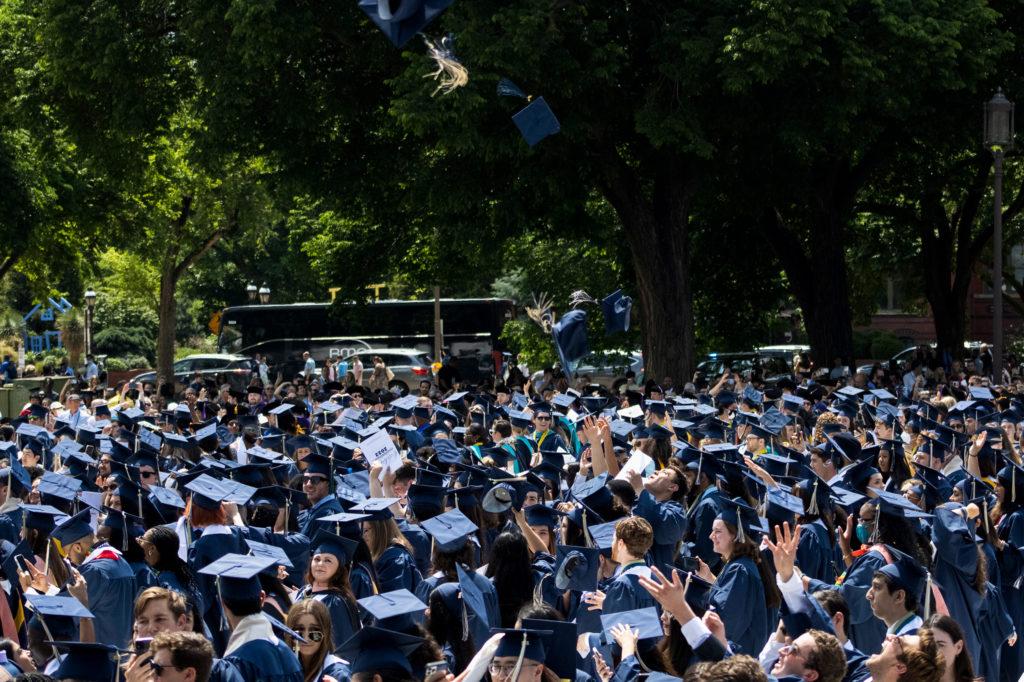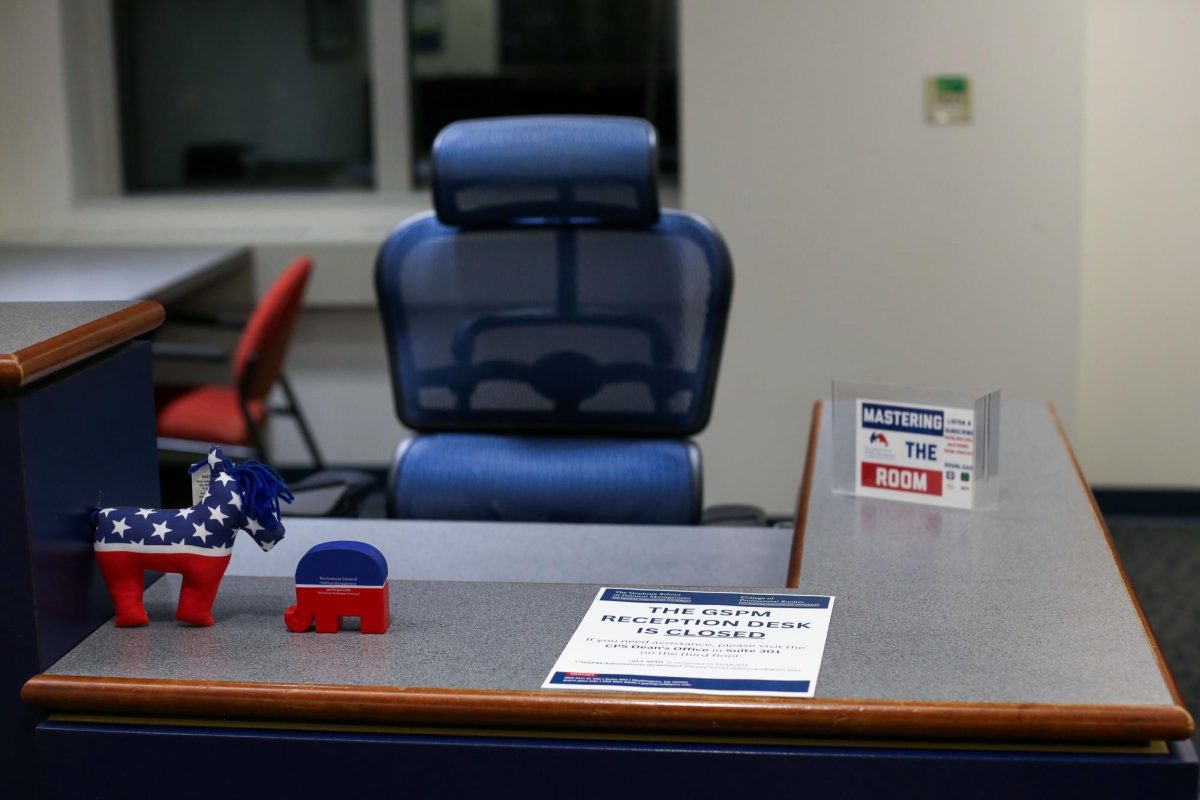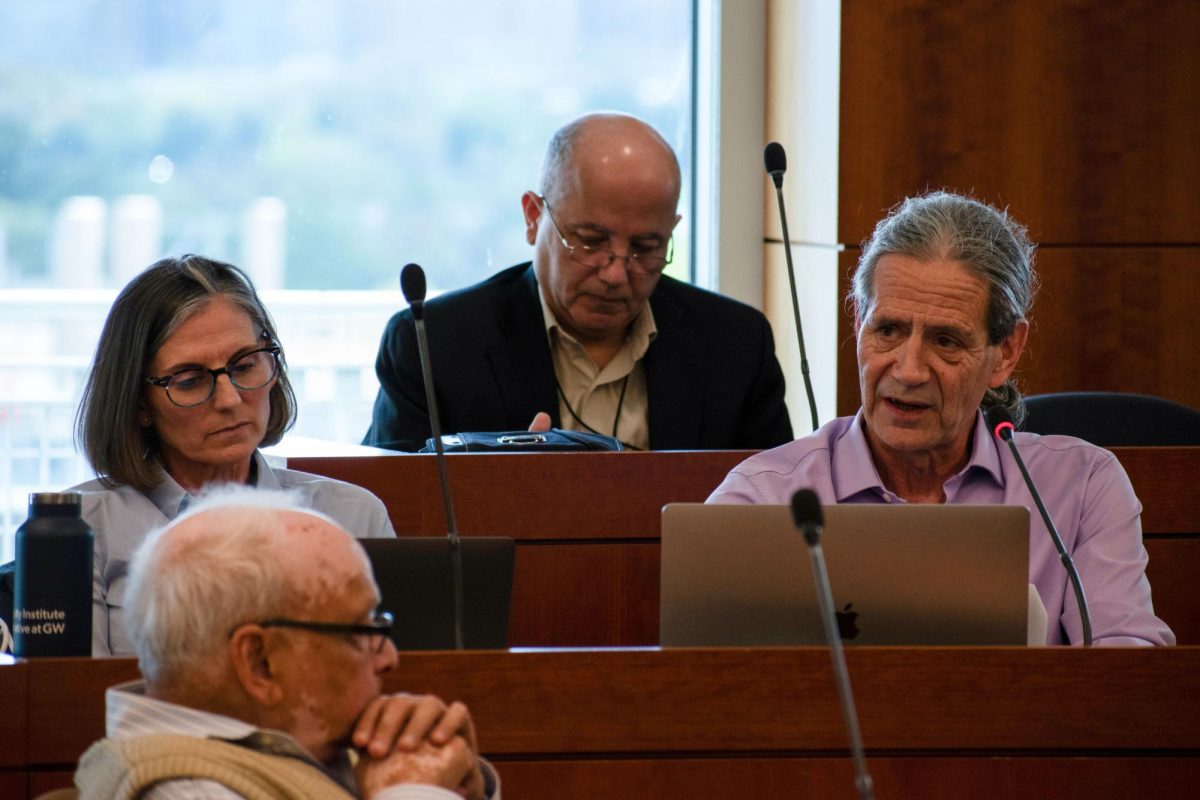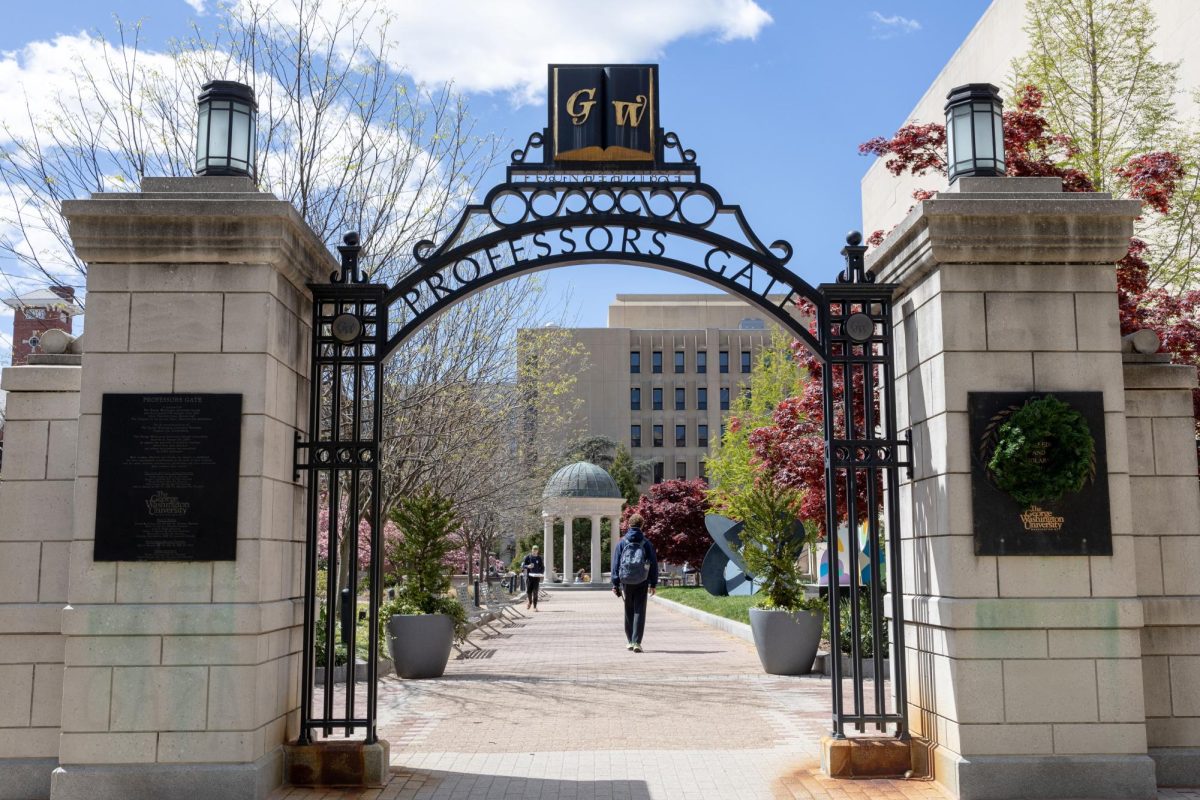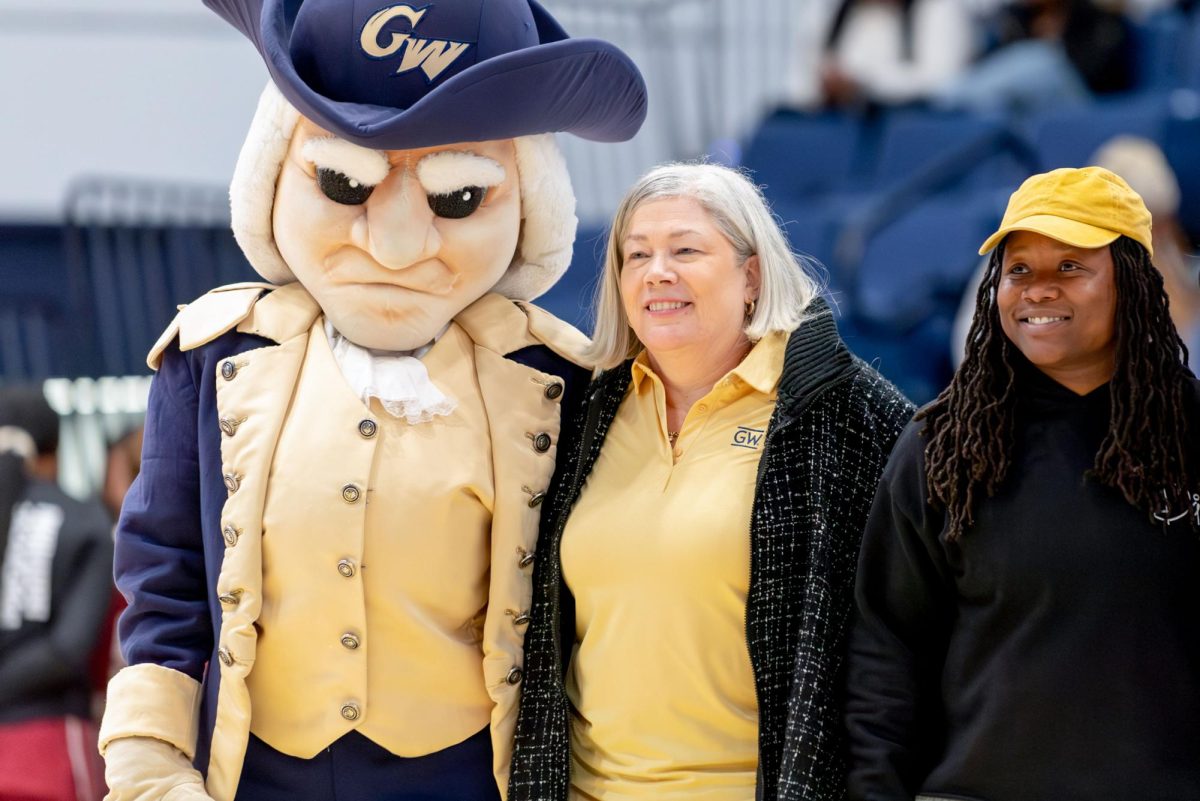Experts said GW’s four-year graduation rate decrease of 4 percent between the Class of 2021 and Class of 2022 is in line with universities across the country and is indicative of the ongoing impact of the COVID-19 pandemic.
Provost Chris Bracey said at a Faculty Senate meeting earlier this month that the four-year graduation rate dipped from 79.2 percent to 75.2 percent between the Class of 2021 and the Class of 2022, attributing the drop to the University’s switch to remote learning in 2020 as students sought alternatives like transferring or taking a gap year. Experts said the decline in the four-year graduation rate at GW comes as no surprise as students across the country opted to defer their education due to medical or mental health concerns as a result of the pandemic.
“Recall that we were remote in 2021 for that academic year, and some students did elect to matriculate elsewhere given that most colleges and universities were offering in-person learning options while we were remote,” Bracey said at the senate meeting earlier this month.
Bracey said the 75.2 percent graduation rate accounts for all the students who graduated through 2022, but the class graduation rate is now closer to 79 percent as of early March because of processing delays for some students’ transfer credits and additional degrees.
Officials project the six-year graduation rate will rise to 85.1 percent this school year for the cohort of students who entered the University in 2017, which would represent an uptick from the 84.8 percent rate for students who entered GW in 2016. The cohort that entered in 2015 had an 83.7 percent six-year graduation rate, according to the report.
Bracey said the University has invested in libraries and “world-class” faculty with the hope that “improved pedagogy and better performance” will provide students with the resources they need to graduate and in turn elevate graduation rates. He said financial factors, like tuition hikes, can also decrease graduation rates.
“Every year, we have students, high-performing students, who simply cannot afford to continue to matriculate at the University,” Bracey said. “And so the decisions we make in terms of tuition increases, additional fees and financial aid budgets, contributions to need-based scholarships and all these sorts of things are reflected in our graduation rate.”
Bracey said while GW’s retention rates have recovered “nicely” as officials reintroduced in-person learning, the “slow and difficult” recovery from the pandemic will stall officials’ recovery to pre-pandemic levels. The retention rate fluctuated between 88 percent, 90.7 percent and 89.6 percent between the classes that entered in 2019, 2020 and 2021, respectively.
“Indeed, we should be striving to reach 94 percent in our retention rate, as that’s typically where top 50 schools hover,” Bracey said. “This means finding about 75 to 80 more students each year to succeed at GW and remain with us the following year.”
Experts in higher education said universities across the country have witnessed drops in their graduation rates as the pandemic caused students to reassess their college educations due to the pandemic’s impact on students’ medical and mental well-being.
Roger Thompson, the vice president for student services and enrollment management at the University of Oregon, said the drop in the four-year graduation rate during the pandemic was expected as students decided to take a leave of absence with the hopes universities would later return to in-person learning.
Bracey said at the senate meeting earlier this month that 90 students in the Class of 2022 took a leave of absence during their time at GW, marking an increase from the “handful” of students in previous classes who took a leave of absence.
“It’s clear to us that we’re going to take a little hit on graduation rates because we had, as I think many schools did, students who elected to say, ‘I’m going to wait until this is done. I don’t really want to pay tuition for a Zoom kind of experience. I’m going to wait until it’s a little more normal,’” Thompson said.
Thompson said the pandemic has also been a traumatic experience for students, which could impact their academic performance and dock four-year graduation rates. The Center for Collegiate Mental Health at Penn State University found that 94 percent of the college students already seeking mental health services reported that the pandemic negatively impacted at least one aspect of their life.
“If you take human beings that are social creatures, even the most introverted person has social needs, and you take them away for a year and a half, we’re going to have an impact,” Thompson said.
Thompson said top private and public universities like GW will have an easier time recovering from four-year graduation rate drops than smaller, less well-known colleges.
“Some of the data that I’ve read in The Chronicle of Higher Education indicates that it’s more of the top tier public and private that have seen the sort of rubber band effect of bouncing back very quickly after the pandemic and some of the smaller, more regional public institutions have not,” Thompson said.
Cassandre Alvarado, the associate dean for undergraduate education at the University of Texas at Austin, said many campuses are bracing for possible drops in graduation rates for students who were in college during the pandemic as some either withdrew due to medical reasons or because some courses they needed to complete their degrees were unavailable in an online format.
“Students weren’t able to make as much progress on their degree because the courses they needed to take didn’t, weren’t offered in online modalities, various things like that,” Alvarado said.
Alvarado said university administrations that “spend time and energy interrogating” what students are going through, both academically and emotionally, and take students’ concerns into account are usually most successful at improving their four-year graduation rates.
“Simply talking to students and understanding their concerns doesn’t raise graduation rates,” Alvarado said. “Talking to students, understanding their concerns and then attempting within reason to mitigate those concerns can be an effective strategy.”
Alvarado said although the data does not “draw a straight line” between tuition hikes and graduation rates, financial pressures can have an impact on student success.
“Across the board, factors like inflation, rising cost of living, rising cost of groceries, gas, car, all of those things can have impacts on students if they do not receive the sort of appropriate financial support that mirrors or matches the rates of inflation or the increased costs,” Alvarado said.


